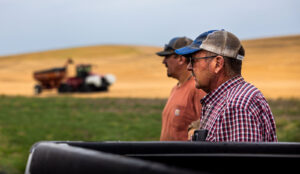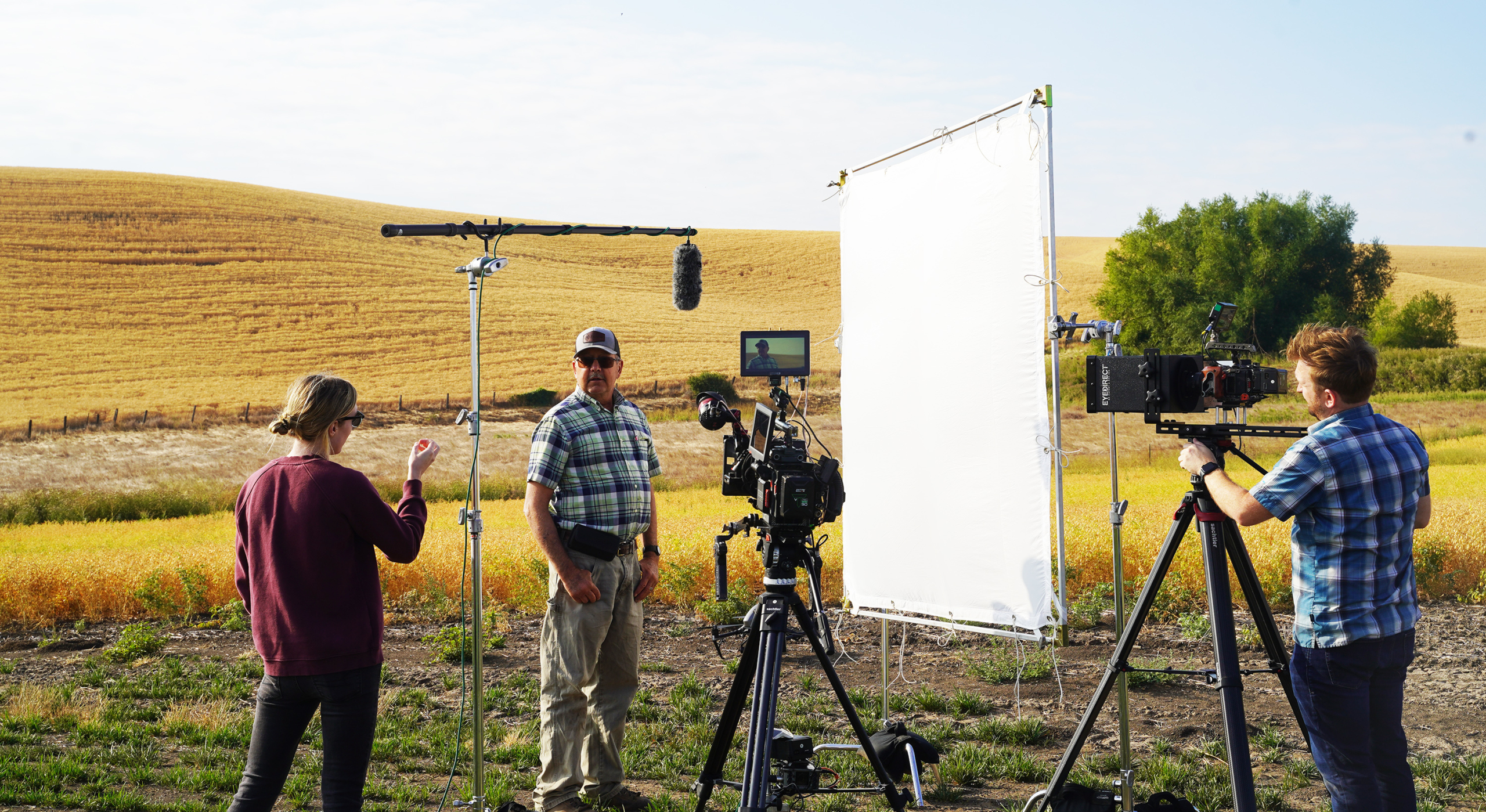A business card to describe the jobs Art Schultheis fills in a typical year would be too big for any pocket.
“I drive a tractor and harvest with a combine – all the things people think a farmer does,” explained Schultheis, a fifth-generation farmer from Colton, Washington. “But behind the scenes I’m also a mechanic, I’m a bookkeeper, and, like most farmers, I have a whole long list of other jobs.”
Planning Ahead
On a late August afternoon, in a wheat field a dozen or so miles north of his home, Schultheis greeted a film crew (photo above) with a glance to the sky and a shrug. A soft rain had begun to fall, bringing that day’s harvest to a reluctant halt.
“I am not going to even try to predict it,” he announced to the film crew, while taking another glance upward. “But I think we may as well plan to get back at it tomorrow.”
Yet another job for Schultheis: planning strategist.
The film crew was commissioned by U.S. Wheat Associates (USW), which is collecting “Stories of Stewardship” from wheat farmers across the country to highlight their efforts to produce high-quality crop using sustainable practices.
In August, the 61-year-old Schultheis was harvesting his 40th wheat crop. His diversified operation typically grows hard red winter (HRW), soft white winter (SRW), hard red spring (HRS), and hard white spring wheat. The farm has also produced barley, garbanzo beans, lentils, Kentucky bluegrass seed, oats, canola, and alfalfa. There are also 10 beef cows to take care of.

An Eye to the Future
Schultheis took over Diamond S Farms from his father more than three decades ago. With an eye to the future, his son Kyle has returned to the farm and is being mentored to one day take over all his father’s jobs. Bringing Kyle into the mix is part of the family’s approach to sustainability.
“To me, there are three parts to sustainability,” Schultheis explained. “Number one is I want to leave the land in better shape than when I started farming. Number two is my farm must be profitable. If you are not profitable, you are not sustainable. Number three is that you need a succession plan for your farm to continue to operate through generations.”
As the film crew set up the next morning to capture his story, Schultheis pointed out that sustainability is second nature to him and all other farmers.
“We have always cared for the land, but now we have tools that we never had decades ago,” he said. “We can do things today that we could not do in the past, and the soil keeps producing at higher and higher levels. One of my hopes for Kyle is that when I’m gone, he can stand here and say he learned things from me and makes the land even better than it will be once I call it quits.”
USW’s Stories of Stewardship series will be available for all to see and explore. It is expected to be of special interest to customers of U.S. wheat around the world.
Responsible as Possible
“I think consumers here in the United States and across the world are asking questions about where their food comes from,” said Schultheis. “On our farm, we do not raise commodities, we are raising food. And we need to be as responsible as possible because we know the end-consumer is making that connection between where food comes from and how it is produced. To be honest, it makes my job a lot more fun.”
And by his “job,” Schultheis means every single one of them.


